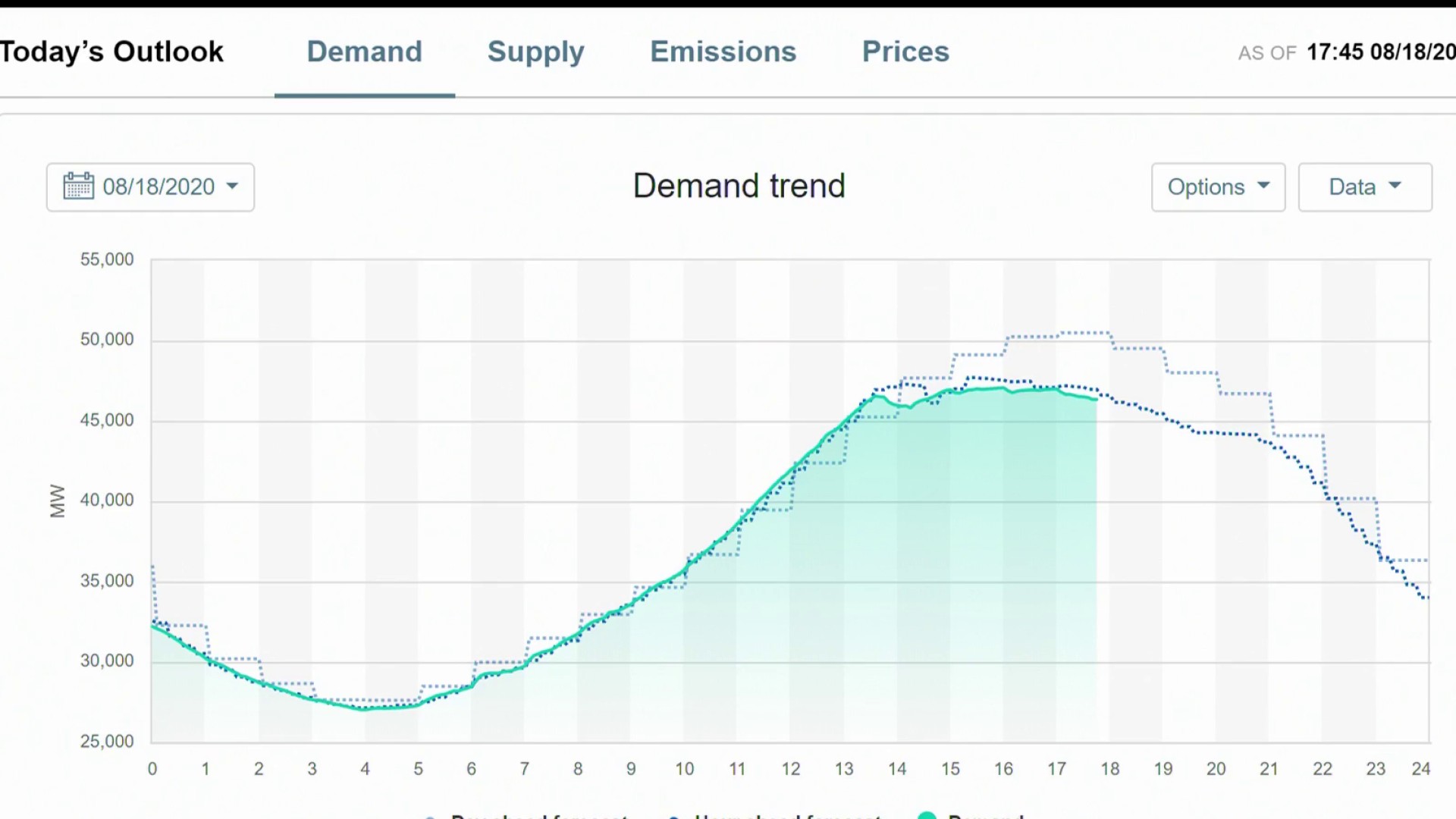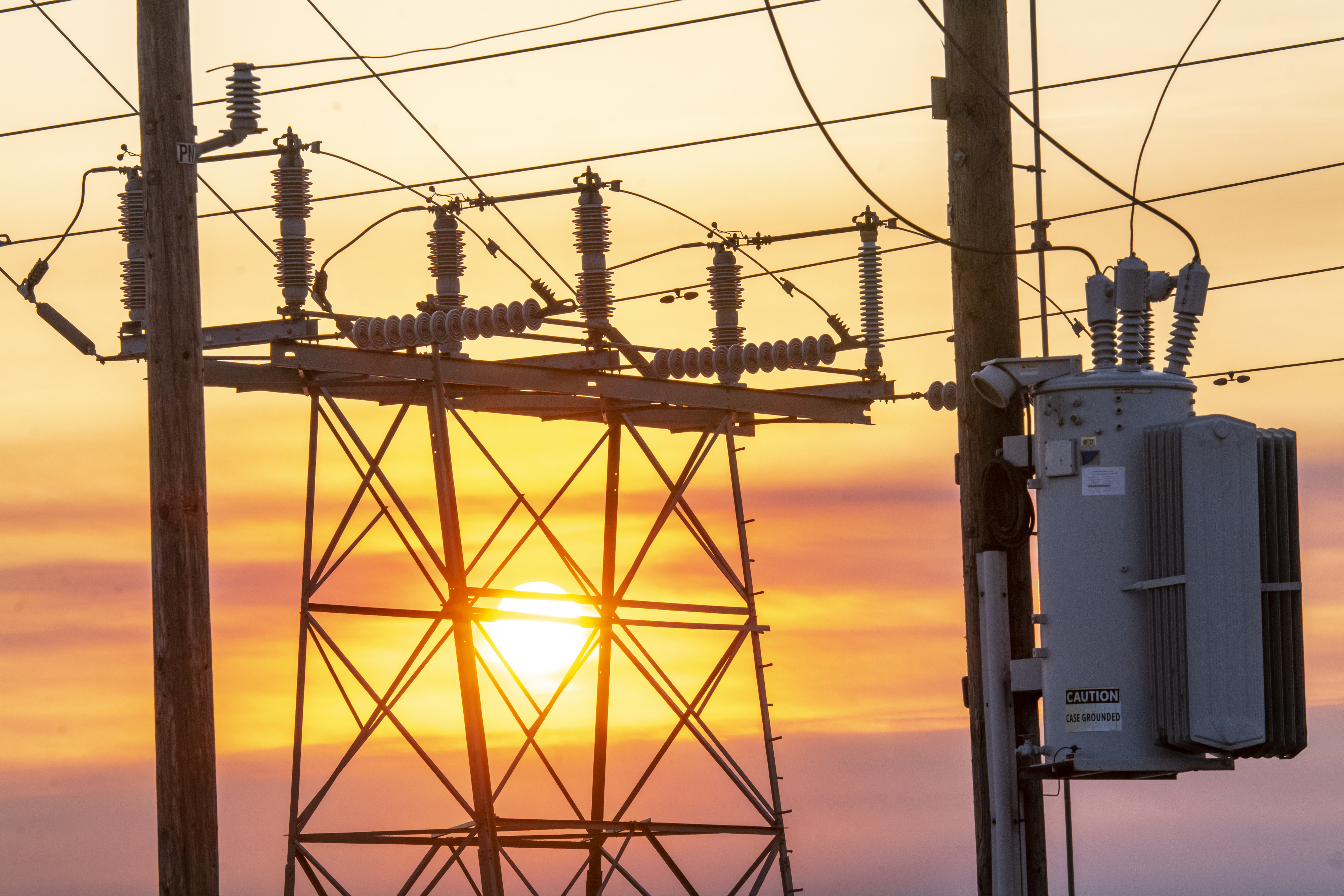The return of critical electrical shortages last weekend, prompting emergency rolling power cut-offs scattered throughout California, triggered a broad range of extraordinary responses in the ensuing days to bring the statewide grid back from the brink of being overloaded and overwhelmed, officials have revealed.
The actions included major industrial companies, including Chevron and the electric automaker Tesla, reducing their electricity consumption, and the city of San Francisco drawing down its main supply of water from the Hetch Hetchy reservoir in order to generate hydroelectric power for the grid.
During Gov. Gavin Newsom's briefing Wednesday, he gave shout outs to all three.
In addition, the city of Los Angeles, through its Department of Water and Power, increased its own independent generating capacity to produce electricity for use in the rest of the state.
The statewide grid supplies electricity for the vast majority of California--the city of LA being the largest exception. The grid's manager, the California Independent System Operator (CAISO), had warned last year of limited guaranteed options for temporary expansions of generating capacity to meet demand during severe heat waves.
It arrived last Friday, and only now is beginning to relent.
CAISO said the squeeze was compounded by the loss of a major power plant forced offline by a malfunction, and the sudden calming of wind that elimated a thousand megawatts of generation for half an hour.
What's worse, prospects of importing power from out of state--a tool historically used by California during energy squeeze--were lessened by the heat wave's broad reach across the west, leaving California's neighbors also hard-pressed to meet their own energy demands.
With the help this week, the grid has come close but avoided the need for further outages.
"Monday and Tuesday, conservation efforts were the reason--and probably the
only reason--we were able to get through without load disruption," said Stephen Berberich, CAISO chief executive, during a briefing Wednesday.
Berberich disclosed that the grid also benefited from power sacrifices by the state Department of Water Resources (DWR), manager of the California Aqueduct. The amount of electricity required to pump Aqueduct water over the Tehachapi Mountains en route to Southern California makes it the state's single largest power consumer. But faced with the power squeeze, it reduced pumping, according to DWR Deputy Director Erin Mellon.
DWR also took a series of other steps, including increasing power generation from the State Water Project's hydroelectric plants. In coordination with the Metropolitan Water District, increased water deliveries through the Devil Canyon hydroelectric plant in San Bernardino provided an additional 80-150 megawatts
of power to the grid, Mellon said. All told, DWR estimates its measures netted the grid as much as 760 megawatts.
To put that in context, peak demand in recent days, which typically occurs late afternoon to early evening, has been just under 50,000 megawatts.
To keep the power on during peak demand, the key factor is how much power the grid can deliver at that particular instant, rather than the total amount of energy consumed over a period of time. The system has minimal storage capacity to serve as a buffer against demand increases, though improvements in Lithium-Ion battery technology are making that prospect more feasible.
The LADWP has also delivered similar levels of power to the state grid, and a total of nearly 10,000 megawatt-hours of energy since last Friday, according to Joe Ramallo, Assistant General Manager. He said during peak demand hours Tuesday evening, DWP was providing the grid between 400-700 Megawatts of power, enough to keep the electricity on at some half a million locations outside the city of LA.
Like the state of California, LADWP is in the process of converting its power portfolio from fossil fuels to renewable energy sources, primarily wind and solar. In the meantime, LADWP maintains the ability to fire up now often-idled
thermal plants for emergency situations, and did so this week to create additional power, Ramallo said. It also sent power to the Imperial Irrigation District, and even answered a call for help from Arizona's Salt River Project.
Several thousand LADWP customers in certain neighborhoods have temporarily lost service during the heat wave. This was due not to any shortage in generating capacity, but rather failure of local distribution equipment--such as pole-top transformers--under the stress of heat and delivering more power.
Newsom has ordered CAISO and two state commissions--Energy and Public Utilities--to investigate and report what went wrong with the state grid's capacity, how to fix it, and how to prevent it from happening again.
"We cannot allow this to become a permanent state of anxiety," said Newsom.



